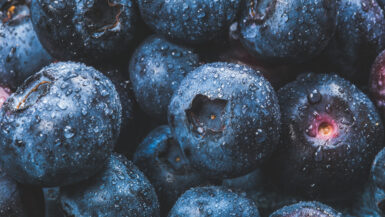Artificial colors and flavors are ubiquitous in the food industry, and it’s hard to imagine a world without them. From the bright blue color of sports drinks to the tangy taste of sour candies, these additives have become an integral part of our food culture. However, the use of artificial colors and flavors has been the subject of controversy for decades, with some experts warning about the potential health risks associated with their consumption. In this article, we will explore the dangers of artificial colors and flavors and why you should be cautious about consuming them.
The Health Risks Associated with Consuming Artificial Colors and Flavors
Consuming artificial colors and flavors has become a common practice in the food industry. They are added to processed foods and beverages to enhance their taste, appearance, and texture. However, these additives have raised concerns about their potential health risks.
One of the main health risks associated with consuming artificial colors and flavors is the development of allergic reactions. Some people may experience symptoms such as hives, itching, and swelling after consuming foods that contain artificial colors and flavors. In severe cases, anaphylaxis, a life-threatening allergic reaction, may occur.
Another concern is the link between artificial colors and flavors and hyperactivity in children. Several studies have suggested that consuming artificial colors and flavors may increase hyperactivity and inattention in children. In fact, some countries have banned certain artificial colors and flavors in foods marketed to children.
Furthermore, some artificial colors and flavors have been linked to cancer and other chronic diseases. For instance, some studies have suggested that the artificial color Red 40 may cause DNA damage and increase the risk of cancer. Similarly, some artificial flavors contain chemicals that may have harmful effects on human health.
It is important to note that the health risks associated with consuming artificial colors and flavors may vary depending on the type and amount of additive consumed, as well as an individual’s sensitivity to them. However, it is clear that there are potential risks associated with these additives, and therefore, it is important to be aware of them and consume them in moderation.
In conclusion, the consumption of artificial colors and flavors in processed foods and beverages poses several health risks. While these additives may enhance the taste, appearance, and texture of food, their potential negative effects on human health cannot be ignored. It is important to read food labels carefully and choose natural alternatives when possible to reduce the consumption of artificial colors and flavors.
The Impact of Artificial Colors and Flavors on Children’s Behavior and Development
Artificial colors and flavors are commonly found in processed foods and beverages marketed towards children. However, research has shown that these additives may have negative effects on their behavior and development.
Several studies have linked artificial colors and flavors to hyperactivity and inattention in children. In one study, children who consumed a drink containing artificial colors and flavors showed increased hyperactivity compared to those who consumed a placebo drink. Another study found that eliminating artificial colors and flavors from the diets of children with ADHD resulted in significant improvements in their behavior.
Moreover, artificial colors and flavors have been linked to other behavioral problems such as aggression and irritability. A study conducted on preschool children found that those who consumed foods containing artificial colors and flavors had more frequent temper tantrums and aggressive behavior compared to those who consumed natural foods.
The impact of artificial colors and flavors on children’s development is also a concern. Some studies have suggested that these additives may affect cognitive development, learning, and memory. Additionally, some artificial flavors contain chemicals that may have harmful effects on the developing brain.
It is important for parents to be aware of the potential negative effects of artificial colors and flavors on their children’s behavior and development. Reading food labels carefully and choosing natural alternatives can help reduce their consumption. Furthermore, advocating for stricter regulations on the use of these additives in children’s foods can help protect their health and well-being.
In conclusion, artificial colors and flavors may have a negative impact on children’s behavior and development. While more research is needed to fully understand their effects, it is clear that parents should be cautious of their children’s consumption of these additives. Choosing natural alternatives and advocating for stricter regulations can help ensure the health and well-being of our children.
The Prevalence of Artificial Colors and Flavors in Processed Foods and Beverages
Artificial colors and flavors are widely used in the food industry to enhance the taste, appearance, and texture of processed foods and beverages. In fact, it is estimated that up to 90% of processed foods contain these additives.
These additives can be found in a variety of products, including soft drinks, candies, baked goods, and even savory snacks such as chips and crackers. They are often used to create vibrant colors and unique flavors that are appealing to consumers.
However, the high prevalence of artificial colors and flavors in processed foods and beverages is a cause for concern. As discussed in previous sections, these additives have been linked to various health risks, including allergic reactions, hyperactivity, and cancer.
Furthermore, the overconsumption of processed foods and beverages that contain artificial colors and flavors has been associated with an increased risk of obesity, type 2 diabetes, and other chronic diseases. These foods are often high in calories, sugar, and unhealthy fats, and low in essential nutrients.
Reducing the consumption of processed foods and beverages that contain artificial colors and flavors can be challenging, but it is possible. Choosing whole, natural foods and beverages is a good place to start. Reading food labels carefully and avoiding products with long ingredient lists that contain artificial colors and flavors can also help.
In conclusion, artificial colors and flavors are prevalent in processed foods and beverages, and their consumption has been linked to various health risks. While it may be difficult to completely eliminate these additives from our diets, reducing their consumption by choosing whole, natural foods and beverages can help improve our health and well-being.
The Regulatory Framework for Artificial Colors and Flavors in the Food Industry
The use of artificial colors and flavors in the food industry is regulated by various organizations worldwide. In the United States, the Food and Drug Administration (FDA) is responsible for regulating food additives, including artificial colors and flavors.
The FDA has established a list of approved food additives that are considered safe for consumption. However, food manufacturers are required to comply with strict guidelines regarding the amount and type of additives they can use in their products. The FDA also requires food manufacturers to list all food additives on their product labels, including artificial colors and flavors.
In Europe, the European Food Safety Authority (EFSA) regulates food additives, including artificial colors and flavors. The EFSA assesses the safety of food additives before they are approved for use in the European Union (EU). The EFSA also sets strict limits on the amount of food additives that can be used in food products.
Despite these regulations, concerns have been raised about the safety of some artificial colors and flavors. In response, some countries have banned certain artificial colors and flavors in foods marketed to children. For example, the UK has banned six artificial colors due to concerns about their potential negative effects on children’s behavior.
It is important to note that the regulatory framework for artificial colors and flavors varies by country, and some countries may have stricter or more lenient regulations than others. Furthermore, regulatory bodies may not have the resources to thoroughly test all additives before they are approved for use.
In conclusion, the use of artificial colors and flavors in the food industry is regulated by various organizations worldwide. While these regulations aim to ensure the safety of these additives, concerns have been raised about their potential negative effects on human health. Consumers should be aware of the potential risks associated with consuming these additives and advocate for stricter regulations and transparency in the food industry.
The Natural Alternatives to Artificial Colors and Flavors in Food and Beverages
Consumers are becoming increasingly aware of the potential health risks associated with consuming artificial colors and flavors. As a result, there has been a growing demand for natural alternatives in the food and beverage industry.
One popular natural alternative to artificial colors is beet juice. Beet juice contains a natural red pigment called betalain, which can be used as a coloring agent in foods and beverages. Other natural colorings include turmeric, spirulina, and paprika.
Natural flavors can also be used to enhance the taste of foods and beverages. For example, vanilla extract, cinnamon, and citrus juices can add flavor without the use of artificial additives. Additionally, herbs and spices such as basil, oregano, and thyme can be used to add depth and complexity to savory dishes.
Using natural alternatives to artificial colors and flavors not only reduces the potential health risks associated with consuming these additives, but it also supports sustainable agriculture and local food systems. Furthermore, natural alternatives can often provide a more authentic and nuanced taste and color profile to foods and beverages.
While natural alternatives may be more expensive and difficult to source than artificial additives, consumers can advocate for their use by choosing products that contain natural ingredients and supporting companies that prioritize sustainability and transparency in their production processes.
In conclusion, natural alternatives to artificial colors and flavors are becoming increasingly popular in the food and beverage industry. These alternatives not only reduce the potential health risks associated with consuming artificial additives, but they also support sustainable agriculture and local food systems. Consumers can advocate for their use by choosing products that contain natural ingredients and supporting companies that prioritize sustainability and transparency in their production processes.
The Ethical Concerns Surrounding the Use of Artificial Colors and Flavors in Food Production
The use of artificial colors and flavors in food production has raised ethical concerns related to transparency, consumer choice, and animal welfare.
One major concern is the lack of transparency in the food industry regarding the use of artificial colors and flavors. Many consumers are unaware of the presence of these additives in their food, and food manufacturers are not always required to disclose the use of these additives on their product labels. This lack of transparency can prevent consumers from making informed choices about their food and can lead to a distrust of the food industry.
Another ethical concern is the impact of artificial colors and flavors on animal welfare. Some of these additives are derived from animal products or are tested on animals before they are approved for use. This raises questions about the ethical treatment of animals in the food industry and the need for more humane alternatives.
Furthermore, the use of artificial colors and flavors can limit consumer choice by creating a standardized taste and appearance for processed foods and beverages. This can stifle innovation and creativity in the food industry, and prevent consumers from experiencing the unique flavors and textures of natural foods.
To address these ethical concerns, consumers can advocate for greater transparency and accountability in the food industry. They can also support companies that prioritize sustainability, animal welfare, and natural ingredients in their production processes. Additionally, choosing whole, natural foods and beverages over processed products can promote a more ethical and sustainable food system.
In conclusion, the use of artificial colors and flavors in food production raises ethical concerns related to transparency, animal welfare, and consumer choice. Consumers can take action by advocating for greater transparency and supporting companies that prioritize sustainability and natural ingredients. Choosing whole, natural foods and beverages over processed products can also promote a more ethical and sustainable food system.
The role of consumer awareness in reducing the consumption of artificial colors and flavors
Consumer awareness plays a crucial role in reducing the consumption of artificial colors and flavors in food and beverages. When consumers are informed about the potential health risks associated with consuming artificial colors and flavors, they are more likely to make informed choices about the types of products they purchase and consume.
One way that consumers can increase their awareness about the use of artificial colors and flavors in food and beverages is by reading food labels. The ingredients list on the label provides important information about the types of additives used in the product. Consumers should be wary of products that contain long lists of artificial colors and flavors, as these may indicate a higher risk of health problems.
Another way that consumers can reduce their consumption of artificial colors and flavors is by choosing natural and organic products. These products are often free from artificial additives and are made from natural ingredients. While they may be more expensive, they offer a healthier alternative to processed foods and beverages.
In addition to reading labels and choosing natural products, consumers can also raise awareness about the dangers of artificial colors and flavors by sharing information with others. By discussing the risks of consuming these additives with friends and family, consumers can help to increase awareness and encourage others to make healthier choices.
Overall, consumer awareness is a key factor in reducing the consumption of artificial colors and flavors in food and beverages. By reading labels, choosing natural products, and sharing information with others, consumers can make informed choices about the types of products they purchase and consume, ultimately promoting better health and well-being.
The potential long-term effects of consuming artificial colors and flavors on human health
Artificial colors and flavors have been linked to a number of potential long-term health effects. While more research is needed to fully understand the extent of these effects, studies have shown that consuming large amounts of these additives over extended periods of time may increase the risk of certain health problems.
One potential long-term effect of consuming artificial colors and flavors is an increased risk of cancer. Some studies have found that certain artificial colors and flavors may be carcinogenic, meaning they have the potential to cause cancer. While the risk of cancer from consuming these additives is relatively low, it is still a cause for concern.
Another potential long-term effect of consuming artificial colors and flavors is an increased risk of allergic reactions. Some people may be allergic to certain artificial additives, and repeated exposure to these additives may increase the risk of developing an allergy. In some cases, these allergies can be severe and even life-threatening.
Consuming artificial colors and flavors may also have a negative impact on the liver and kidneys. These organs are responsible for filtering toxins from the body, and consuming large amounts of artificial additives may put added strain on them. Over time, this can lead to liver and kidney damage and an increased risk of chronic disease.
Overall, while more research is needed to fully understand the long-term effects of consuming artificial colors and flavors, it is clear that these additives may pose a risk to human health. Consumers should be aware of the potential risks and take steps to reduce their consumption of these additives, such as choosing natural and organic products and reading food labels carefully.
The impact of artificial colors and flavors on the environment and sustainability
The production and use of artificial colors and flavors also have an impact on the environment and sustainability. The manufacturing process for these additives requires a significant amount of energy and resources, which can contribute to environmental degradation and climate change.
In addition, the disposal of products containing artificial colors and flavors can also have negative environmental impacts. When these products are discarded, they may release harmful chemicals into the environment, such as those found in plastic packaging or synthetic food dyes. These chemicals can pollute the air, water, and soil, and can harm wildlife and ecosystems.
Furthermore, the use of artificial colors and flavors in food production may contribute to unsustainable agriculture practices. The demand for these additives may incentivize the use of chemical fertilizers and pesticides, which can have negative impacts on soil health, water quality, and biodiversity.
To promote sustainability and reduce the environmental impact of artificial colors and flavors, consumers can choose to support organic and natural food production. These methods prioritize sustainable agriculture practices and avoid the use of harmful chemicals and additives. Additionally, reducing the consumption of processed foods and beverages, which often contain high levels of artificial additives, can also help to reduce the environmental impact of these additives.
Overall, the production and use of artificial colors and flavors have negative environmental impacts that should be considered when making food choices. By supporting sustainable and organic food production and reducing the consumption of processed foods, consumers can help to reduce the environmental impact of these additives.





Leave a reply